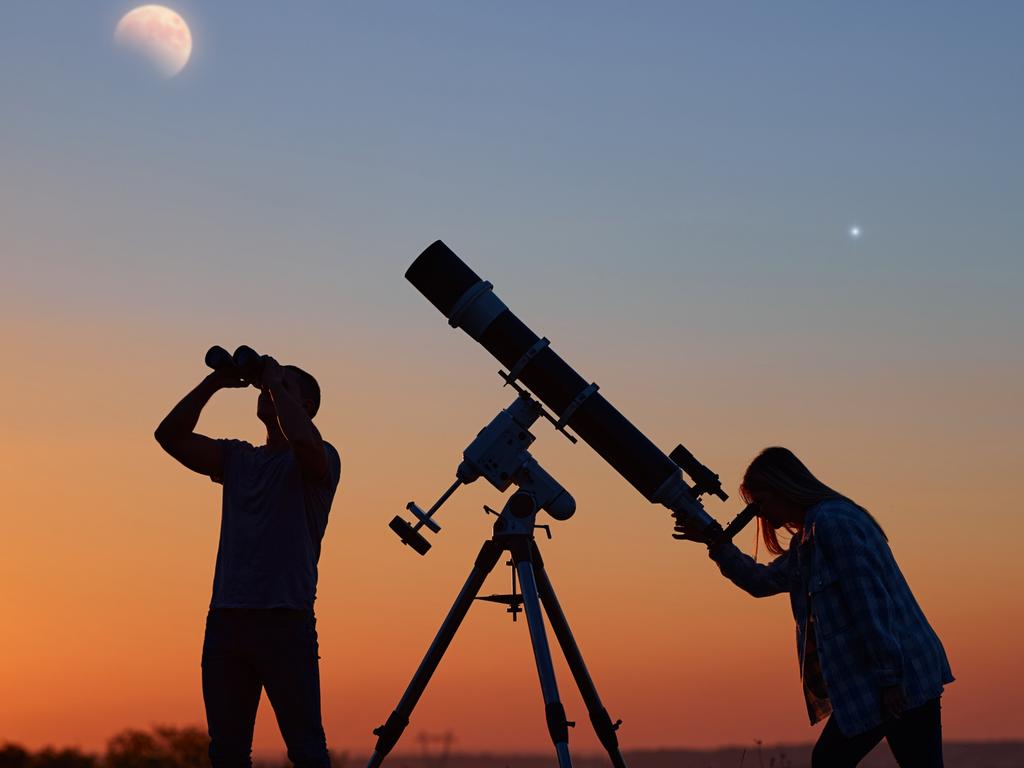Two meteor showers set to light up Australian skies around July 31
One of the most unusual cosmic events of the year is set to light up our skies. See when and how you can catch a glimpse of it.

Stargazers across Australia are in for a stellar show next week when they will be able to see not just one, but two meteor showers streaking through the night sky.
The rare phenomenon will occur when two showers, Alpha Capricornids and the Southern Delta Aquariids, peak in the final week of July.
Meteor showers occur when Earth’s orbit intersects the path of a comet or asteroid. The impact sparks rocky debris which plummets towards Earth and burns up as it enters the planet’s atmosphere, causing a meteor shower.
It doesn’t happen often, and even less when there are two showers at the same time, which is why it will be worth keeping an eye on the night sky in late July to witness the rare spectacle.

WHAT ARE THE METEOR SHOWERS?
The Alpha Capricornids meteor shower is active from July 7 through August 15 with its next expected peak on July 31, according to the American Meteor Society.
This shower is not very strong, but what is notable about it is the number of bright fireballs produced during its activity period. This shower is seen equally well on either side of the equator.
It will peak alongside the Southern Delta Aquariids meteor shower, which is active from mid-July and visible until late August.
These faint meteors are difficult to spot, and if the moon is visible, it will be difficult to view them, experts said.
On July 31, Earth will cross the orbits of comet 96P/Machholz — which causes the Southern Delta Aquariids that peaks from July 29 to July 30 — and comet 169P/NEAT, which births the Alpha Capricornids which will peak from July 30 to July 31.

HOW OFTEN DOES IT OCCUR?
It’s unusual to see two showers at once, so that’s more reason to grab binoculars or a telescope in preparation of the rare show next week.
These showers are annual events – recurring whenever Earth returns to the same place in its orbit which is usually at the end of July.
TOP TIPS TO SEE THE METEOR SHOWERS
The spectacle is most easily seen from the southern hemisphere.
When you look up, if you notice glowing streaks of light that seem to last a long time, then you would have spotted the shower.
These streaks are known as “persistent trains” and roughly 5-10 per cent of Southern Delta Aquariids meteors have them, according to space experts.
The best chance to see them is an extremely dark location away from as much light pollution as possible.
Come prepared with a sleeping bag, blanket, or lawn chair, NASA recommended.
“Lay flat on your back and look up, taking in as much of the sky as possible. Looking halfway between the horizon and the zenith, and 45 degrees from the constellation of Aquarius will improve your chances of viewing the Southern Delta Aquariids,” NASA said.
“In less than 30 minutes in the dark, your eyes will adapt and you will begin to see meteors. Be patient – the show will last until dawn, so you have plenty of time to catch a glimpse.”

WHERE CAN YOU SEE IT IN AUSTRALIA?
For the best experience, Aussies should venture out on the nights of Tuesday July 30 and Wednesday July 31.
From anywhere across Australia and New Zealand, you can start observing from 9pm or 10pm, when the Capricornus and Aquarius constellations are rising in the east, along with the planet Saturn, NASA said.
The longer you’re willing to stay out, the better your chance of seeing meteors.
As the night progresses, the shower will move across the sky, climbing higher until they culminate in the north after midnight.
The best times will be between 11pm and 3am.
More Coverage
Originally published as Two meteor showers set to light up Australian skies around July 31




